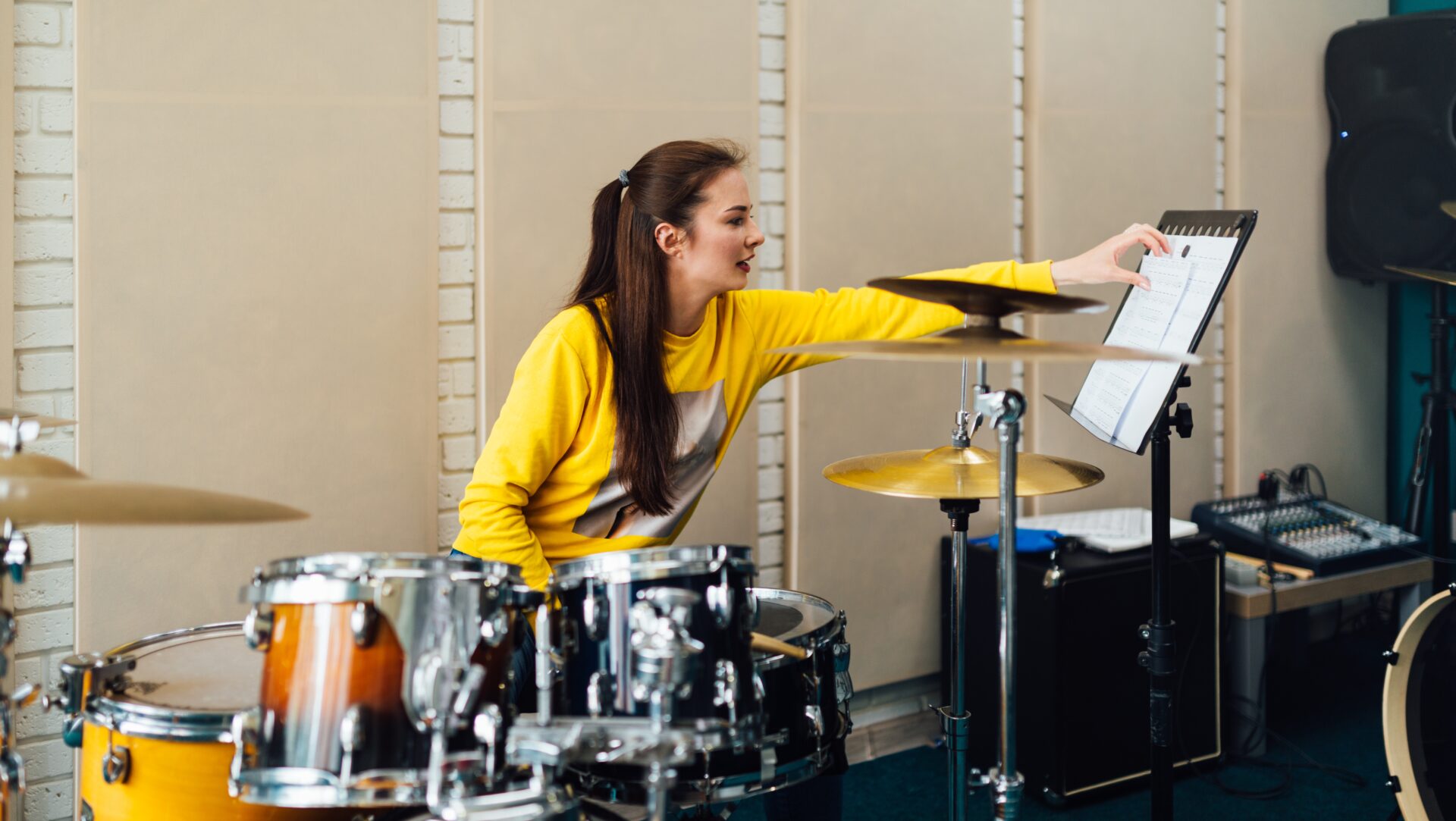BY: STEVE LIPMAN
Practice. It’s the quintessential labor of any artist who wishes to hone their skills and advance their abilities, but in my decades of experience counseling music students, I’ve found almost everyone struggles at some point to develop the routine that works best for them.
That’s because there isn’t only one way to practice. In fact, there are many components of an effective practice routine that an artist can mix and match, with the ultimate goal of developing a personalized regimen that can both feed their soul and drive them forward.
So what makes an effective practice routine? What are the essential components of daily exercise for the serious musician to establish a trajectory toward mastery of their instrument? In short, what is good practice?

The Art of Practicing: “Good Practice” vs. “Bad Practice”
Challenging Yourself
For almost every player and singer out there, there is joy in simply sitting down and playing whatever comes to mind – I mean, that’s why you decided to dedicate your life to music, isn’t it?
I think it would be safe to say the one difference between “good” and “bad” practice is having direction. Playing the same piece over and over again, or just “noodling around” as our guitarist friends might call it, is fun but is not a path to mastery.
A major part of practicing intentionally is challenging yourself. Neil Olmstead, professor of piano at Berklee and a renowned composer and performer in his own right, I think, puts it quite succinctly:
“I think students need two hours minimum per day of working practice – That is, practice of instrumental technique, memorization of repertoire, and creative discovery. Not just playing your instrument.”
Olmstead is pointing to what I might call “intentional” practice. That is, choosing the components of what makes a good player and capitalizing on those points as much as possible. Playing patterns and lines that require you to build your dexterity, learning new material (standards are a great resource to pull from), and working your creative muscle with improvisation and experimentation build a better musician. Noodling around, on the other hand, may be nothing more than warming up.
Boston University Opera professor James Demler suggests designing your routine around starting comfortably, then stepping up the challenge as you progress through your routine.
“I recommend a couple hours a day for practice. Spend ten minutes just warming up your voice with non-strenuous exercises, then another twenty with more demanding vocalizations. The remaining time should be used for either learning or listening to your pieces, and also direct application to the trouble spots you might have within a piece.”
I’d like to highlight something Demler makes clear – it is without a doubt crucial to understand where your weaknesses are, then direct your focus to those points. You may have great dexterity but find it difficult to memorize repertoire. Or, the creative juices flow constantly, but you have trouble converting those inspirations into sound in the real world. Be honest with yourself about both what your strengths are and where you can improve, and you put yourself on a trajectory to mastery.
Consistency
Challenging yourself is not the end-all-be-all of an effective practice routine. Bringing yourself to your craft intentionally and consistently goes hand-in-hand. Like how a professional weightlifter can’t just hit the irons whenever they want, Dr. Raina Murnak, an educator at the Frost School of Music and a professional singer with a wide-ranging career of her own, says every day counts.
“Like in sports, you don’t want your muscles to atrophy with non-use. Especially with singing, you want to keep your voice warm by warming up and singing something every day. You want to keep your mind active and engaged with different and theatrical ways of memorizing your lyrics, also known as your story. This can be silent practice – even lip-syncing in a mirror. Generally, if you engage with your instrument each day, even for a little bit of time, you will be creating healthy practice habits that become part of your lifestyle.”
Dr. Murnak illuminates an important point about practice: it really needs to be a part of your life every day. The “artist lifestyle” is just as much about putting work into your craft consistently as it is relishing in the joy of music.
Professional saxophonist Jay Leslie, who not only has a broad career in the performance world but also in movies and television, has lived his musical life in rhythm since the beginning. Discipline, he says, is crucial. “If possible, practice at the same time each day, taking breaks every so often.”
Setting aside a specific time each day to practice is a great way to create your own version of what Dr. Murnak might call the “lifestyle” of an artist.
Performance
I’ve noticed a lot of budding musicians will look at performance and practice as two ends of the spectrum of being a musician, but some really talented friends of mine would disagree.
Performance and the preparation beforehand, I would argue, are actually a part of practice, part of making us more competent musicians. John Baboian, guitar faculty at Berklee with a career spanning several decades, sees performance as a way to illuminate opportunities to develop your own practice.
“It’s always good to listen to, or watch, a performance, so that you can learn from mistakes. We all make them, whether it is note choices, missed chords, rhythms being off kilter, or maybe something like stage presence,” Baboian says. “The best way to address any of these issues is to see, hear, understand, and be honest with what needs to be fixed.”
It’s like I mentioned above – knowing your weaknesses is a keystone to mastery. We may all naturally be great at some aspect of our musical journey already, but it is in our weaknesses, and how we can improve on them, that will push us to the next level in our career.
And now, with the advent of smartphones and various recording devices, Baboian says it’s easier than ever for an artist to shed light on their points for improvement. Dr. Murnak advises taking your practice and performance recordings to another level:
“Record yourself before a performance so you can view yourself neutrally and out of the act of performing. Take note – what could you do better? Can you see where different choices such as breath support, emotional engagement, movement, intonation, or tone color could have made a positive difference?”
Pleasure in Practice
Remember when I said above that practice is the “quintessential labor” of an artist? I’d like to point out that, though practice really is the bread and butter of an artist’s work toward mastery, we cannot define that labor as something lacking in joy.
The greatest musicians find joy both in the playing of music and in honing their skills. Each of the five professionals I spoke to found their own definition of pleasure in practice – Olmstead, for example, relishes in the “gotcha” moments of his practice. “Pleasure comes from having a new piece securely memorized and ‘in my fingers’ to the point where I am free to creatively interpret the work by adding expressive aspects without distorting the composer’s intention.”
A mentor of Dr. Murnak once told her how fun is an essential part of practice. “Figure out how to make it fun, motivating, and purposeful! No one wants to do something repeatedly they dread. Be your own best friend and your own motivation!”
This is all to say that the musical life is a joyous life while also being one of a great amount of work. And I’m here to say any serious student of music, no matter the discipline, must and can find their own joy in practice.
We’re Here to Help
If you’ve made it this far, I know you are a musician, and all great musicians will benefit from guidance. As a college music school admissions counselor for decades, I’ve helped scores of students find how practice can not only fit into their lives, but how it can be an enriching and joyful experience.
For those who want guidance in their musical journey to make their practice and preparation for music school more fulfilling and more effective, reach out to Inside Music Schools — my advice comes not only as a counselor, but as a musician and one who has quite a lot of musical friends. I am here to say we are ready to help you reach the next level of your musical career. Contact us today!
Founder & President at Inside Music Schools | Insidemusicschools.com
Head of admissions and faculty member at Berklee College of Music for 40 years, Steve Lipman and our team at Inside Music Schools speak music as their primary language. We approach each client contact with open eyes, ears, and minds. As the country’s premier music school consultant, he has advised students from the United States, Canada, the U.K., India, Singapore, Dubai, China, Australia, Turkey, Colombia, Argentina, Brazil, Japan, Israel, Italy, Russia and elsewhere.

